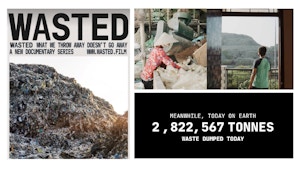Vietnam News

A look at Southeast Asia's evolving landscape of solar energy adoption, from achievements to hurdles and future aspirations.

The new decree is seen as the latter of two policy moves needed to jumpstart the country’s clean energy market. New funding is already flowing, but concerns remain as to whether Vietnam’s power grid can handle more renewables.

Some question if the US$3 billion deal may yet be revived, given vague terms under the country's resource mobilisation plan announced last year that might allow a renegotiation. Observers say the termination is 'good news' for Vietnam's energy transition goals.

Countries should invest in localising major portions of their supply chains, and source affordable solar modules and turbines from China, according to the Institute for Energy Economics and Financial Analysis.
Vietnam Opinion

Food & Agriculture
Vietnam’s rice land restrictions: Time for a rethink?
There is a case for relaxing Vietnam’s long-standing restrictions on the use of land meant for rice cultivation.

For Southeast Asia, it need not be a binary choice between maintaining status quo or pushing for 'degrowth'. Reducing emissions without neglecting job growth imposes lower social costs, and can be a pathway to take for the region.

Carbon & Climate
Strengthening Asia’s voice for sustainable development
Eco-Business has launched new subscription plans for our community. We invite you to support our independent journalism and thought leadership initiatives to forge a sustainable Asia and beyond.

Asean states need to unite on a common stand to beat plastic waste, but national and local efforts matter too.
Policy & Finance
Catalytic capital holds the key to Southeast Asia's green transition
Vietnam Videos

Launched as policymakers lock horns with petrochemicals lobbyists over a treaty to end plastic pollution, the documentary produced by Eco-Business asks why opportunities to solve humanity's waste crisis are being wasted. It will premiere in Singapore and screen on the sidelines of the upcoming COP28 climate summit.

Vietnam's wind market is thriving, but more work lies ahead if the country wants to power its booming economy without imperilling its people and the planet.

Southeast Asian nations are racing to bring clean, affordable power to their people, but one country is outrunning them all. How can states make their renewable energy transition a success?

In gridlocked, smoggy Southeast Asian cities, change is afoot to electrify transport and clear some of the world's most polluted skies. This video documents the pockets of hope for e-mobility around the most climate-vulnerable region.
Vietnam Podcasts

Policy & Finance
The race to insure Southeast Asia against climate risk
Asia lags the world in natural catastrophe protection. Part of the problem could be counting extreme weather losses only after they happen, industry insiders tell the Eco-Business podcast.

GoTo sustainability head Tanah Sullivan tells the Eco-Business Podcast that regulating net-zero claims would decarbonise Southeast Asia faster. Indonesia's biggest internet firm aims to cut emissions to zero by 2030 — a target critics say is unrealistic.

Eco-Business talks to Peter Kiernan, lead energy analyst for the Economist Intelligence Unit, to unpack a new landmark report from the International Energy Agency, which proposes an immediate ban on fossil fuels extraction to curb global warming.

Laos has announced the construction of two new coal plants for this year, despite growing evidence that coal power comes with significant financial risk. What is holding back the country from tapping its rich clean energy resources instead?
Vietnam Press Releases

International Labour Organization
Social, solidarity economy critical to achieving the sustainable development goals in Asia Pacific

The Pinnacle Group International
The 16th Annual Global CSR & ESG Summit and Awards 2024: Celebrating sustainable leadership and innovation
Vietnam Research

Eco-Business, supported by Boehringer Ingelheim
Moving towards a rabies-free Southeast Asia

BirdLife International
State of the World's Birds 2018—taking the pulse of the planet

Eco-Business
Freezing in the tropics - Asean's air-con conundrum

















